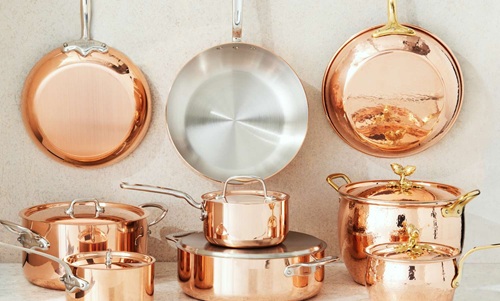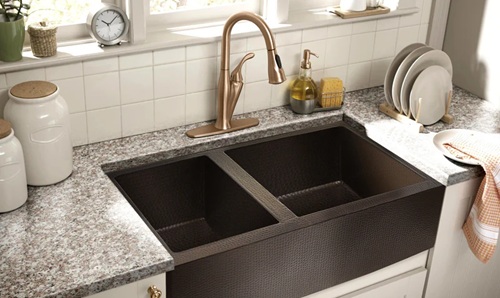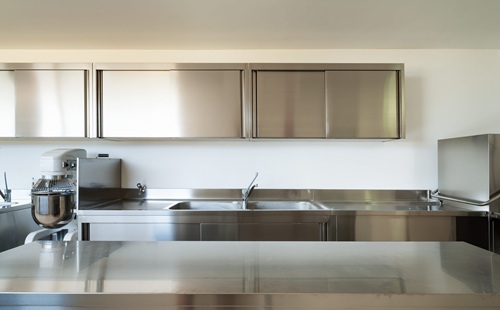When it comes to high-end cookware, copper has long been the choice of professional chefs and culinary enthusiasts. Whether admired for its stunning aesthetic, superior heat conductivity, or old-world charm, copper cookware holds a prestigious spot in both commercial and home kitchens. But as with all materials, it’s not without its trade-offs.
Let explore the pros and cons of copper cookware — covering functionality, maintenance, value, and suitability — so you can decide if it belongs in your kitchen.

What Is Copper Cookware?
Copper cookware is made primarily from copper metal, often lined with stainless steel or tin to prevent food reactions. It is available in various forms — pots, sauté pans, frying pans, saucepans, and jam pans — and is highly prized for its even heat distribution and precise temperature control.
You’ll often find copper cookware in professional kitchens, French restaurants, and among culinary purists who value both performance and aesthetics.
Pros of Copper Cookware
1. Exceptional Heat Conductivity
Copper is one of the best conductors of heat among all cookware materials. It heats up quickly and evenly, eliminating hot spots and giving cooks precise control over cooking temperatures.
Fact Check: Copper’s thermal conductivity is approximately 20 times higher than stainless steel, making it ideal for delicate sauces, caramel, and searing proteins with precision.
2. Rapid Response to Temperature Changes
Because copper reacts so swiftly to temperature changes, it gives cooks an edge in sensitive cooking techniques like tempering chocolate, reducing sauces, or sautéing ingredients without overcooking.
Tip: Professional chefs favor copper for recipes requiring delicate heat control or fast temperature shifts.
3. Elegant and Timeless Appearance
Copper cookware is visually stunning. Its warm, reddish glow adds a touch of sophistication and luxury to any kitchen. Many home cooks also display copper pans as decorative elements.
4. Long-Lasting (with Proper Care)
Well-maintained copper cookware can last for generations. With proper cleaning and periodic re-tinning (for tin-lined pans), copper pots become family heirlooms passed down through kitchens over decades.
5. Even Cooking Results
Because copper distributes heat uniformly across the entire cooking surface and up the sides, it ensures consistent cooking results, preventing burning, uneven browning, or undercooked centers.
6. Lightweight (Compared to Cast Iron)
Copper cookware is typically lighter than cast iron, making it easier to handle, especially in larger pieces like stockpots or sauté pans.
Cons of Copper Cookware
1. Requires Regular Polishing
Copper naturally tarnishes and develops a patina over time due to oxidation. While this doesn’t affect performance, it alters the shiny appearance. If you want to maintain that signature gleam, frequent polishing is necessary.
Maintenance Tip: Use a gentle copper cleaner or a DIY mixture of lemon juice and salt to restore shine.
2. Reacts with Certain Foods
Unlined copper pans can react with acidic foods (like tomatoes, vinegar, and citrus), leading to a metallic taste or discoloration. That’s why most modern copper cookware is lined with stainless steel or tin for food safety.
Fact Check: Ingesting too much copper from reactive surfaces can be harmful, which is why lined cookware is strongly recommended for everyday cooking.
3. High Cost
Copper cookware is an investment. It is significantly more expensive than aluminum, stainless steel, or nonstick cookware due to material costs and craftsmanship.
Price Range: High-quality copper pots can range from ₹15,000 to ₹50,000+ ($200–$600+) per piece.
4. Not Induction Compatible
Pure copper pans do not work with induction cooktops unless they have a special magnetic stainless steel base. This limits their use unless you have a gas or electric stovetop.
Workaround: Some manufacturers now produce induction-compatible copper cookware with layered construction.
5. Tin Linings Require Re-Tinning
Traditional copper pans are lined with tin, which can wear off over time, especially at high temperatures. When this happens, the pan needs to be re-tinned by a professional, which can be costly and time-consuming.
Pro Tip: Avoid using metal utensils in tin-lined pans to prolong their lifespan.
6. Soft Metal — Susceptible to Scratches and Dents
Copper is a soft metal. Even thick-gauge cookware can scratch, dent, or warp with rough handling or high-impact drops. It also can get damaged by abrasive scrubbers.
Comparison: Copper vs. Other Cookware Materials
| Feature | Copper | Stainless Steel | Aluminum | Cast Iron |
| Heat Conductivity | Excellent | Moderate | Very Good | Poor |
| Responsiveness | Very Fast | Slow | Fast | Very Slow |
| Weight | Medium | Medium | Light | Heavy |
| Durability | Moderate (soft metal) | High | Moderate | Very High |
| Maintenance | High | Low | Medium | High |
| Non-reactive | Only when lined | Yes | Lined models only | Yes (when seasoned) |
| Induction Compatible | No (unless modified) | Yes | No | Yes |
| Aesthetic Appeal | Luxurious, classic | Sleek, modern | Basic | Rustic, traditional |
Is Copper Cookware Right for You?
Choose Copper Cookware If:
- You enjoy precise, professional-style cooking and want to master heat control.
- You value aesthetic beauty and want your cookware to double as kitchen decor.
- You’re willing to invest time and money in proper care and upkeep.
- You cook often and want cookware that lasts for decades with maintenance.
Avoid Copper Cookware If:
- You prefer low-maintenance cookware with little cleaning or polishing required.
- You’re on a tight budget and need more affordable options.
- You cook with an induction stove (unless the copper cookware is compatible).
- You prefer cookware that can handle rough handling and metal utensils.
Final Verdict
Copper cookware is a chef’s dream — delivering unmatched heat conductivity, responsive cooking, and beautiful craftsmanship. It’s ideal for serious home cooks and professionals who demand performance and presentation in equal measure.
However, it’s not for everyone. The cost, maintenance needs, and potential reactivity with foods make it more suited to those who truly appreciate its advantages and are ready for the upkeep.
If you’re ready to elevate your cooking game and your kitchen’s style, copper cookware can be a luxurious and functional upgrade that stands the test of time.

